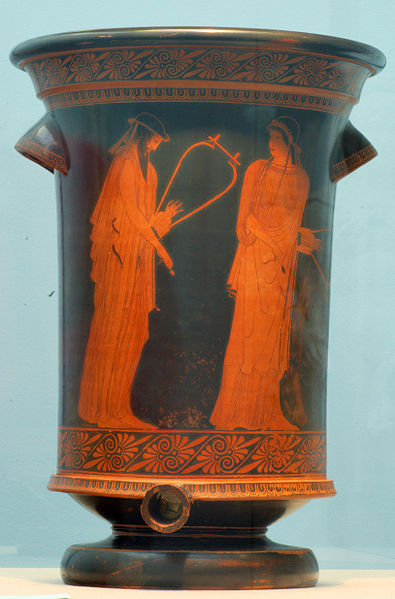Archilochus was a Greek lyric poet of the Archaic period from the island of Paros. He is celebrated for his versatile and innovative use of poetic meters, and is the earliest known Greek author to compose almost entirely on the theme of his own emotions and experiences.
Bust of a bearded man (Archilochus?). Roman copy (c. 2nd century BC) of Greek original (4th century BC)
Coin from ancient Thasos showing Satyr and nymph, late 5th century BC. Archilochus was involved in the Parian colonization of Thasos about two centuries before the coin was minted. His poetry includes vivid accounts of life as a warrior, seafarer and lover.
Ionic capital from the grave of Archilochus, with inscription: "Here lies Archilochus, son of Telesicles", Archaeological Museum of Paros
"Look Glaucus! Already waves are disturbing the deep sea and a cloud stands straight round about the heights of Gyrae, a sign of storm; from the unexpected comes fear." The trochaic verse was quoted by the Homeric scholar Heraclitus, who said that Archilochus used the image to describe war with the Thracians.
Greek lyric is the body of lyric poetry written in dialects of Ancient Greek.
It is primarily associated with the early 7th to the early 5th centuries BC, sometimes called the "Lyric Age of Greece", but continued to be written into the Hellenistic and Imperial periods.
Alcaeus and Sappho (Brygos Painter, Attic red-figure kalathos, c. 470 BC)





